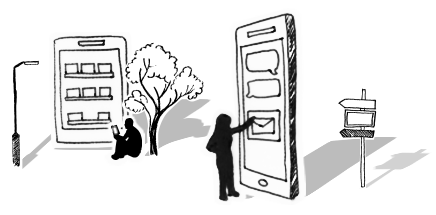




Basic Instinct. Four Theory-Free Rules for Employee Engagement
There are plenty of tools to support our change programmes, and the most effective of these is the one we were born with: our own human instinct.
Communicating change is about human connection. That may sound obvious but in a forest of quadrant models it’s easy to forget how effective our own intuition can be.
We need to trust our instinct and here are four rules which might help. The fourth one is my favourite – we need a sense of fun and we need to keep sight of where we’re going.
1. Speak to no one until you’re clear on your reasons for change
Early on, it’s ok to be unclear on the details of your programme. However, sometimes people rush to engage their audiences while they’re still figuring out a convincing rationale.
You wouldn’t ask your friends to come away on a trip before you could explain why it’s a great idea, and this should be no different in the work place.
I read last year that UK employees, more than any other group, will ask ‘Why’ before making a personal commitment to change. As a Briton, I’m quite proud of that. It makes this rule of instinct even sharper for local readers.
Example – Interactive effort for UK engagement
A global logistics client has been rolling out a new and sensible approach to improve ops efficiency. Employee buy-in seemed straightforward at the client’s other European sites, but this has proved harder in the UK. The client asked us to review its employee engagement approach for the UK. The result was a localised workshop format which begins with ‘why we’re doing this’ before tackling the ‘what’ and ‘how’.
2. Never mind the sceptics
If you only invest in one group of stakeholders, make it the ‘Champions’.
At this point you might expect to pull out a stakeholder map and formulate an approach for each group. That would be diligent, but this piece is about keeping it simple, and following your gut.
Speak to existing change leaders. These are the people acting in line with Ghandi’s words, “BE the change you want to see.” They don’t need to be senior, just influential in supporting your cause. The more you help them, the more effectively they’ll help your cause.
Example – Thanking the real change leaders
An Oil & Gas client wanted a ‘turbo effort’ to boost engagement in its new procurement system. With a week to spare, they focused on a single group of people: the support staff who see the value of the new process (it makes their work easier) and they’re vocal about it. The client pulled them together in a series of ‘thank you’ activities and presentations.
3. Loosen up and relax those around you
For your stakeholders and contributors to do well, make them feel safe. By that I mean safe enough to ask ‘silly’ questions. This is part of the positive failure discussion. It’s vital to expose doubts early, ahead of the countdown to sign-offs and go-lives that increases pressure.
Example – One to ones with site execs
A relaxed conversation is all the more important if you’re checking for support at senior level. A client in the Midlands discussed the danger of the most influential people nodding their agreement when you talk about your plans: “They don’t want to challenge your logic if it means admitting they missed an email.” They addressed this simply – by planning a one to one discussion with relevant General Managers ahead of each implementation of the client’s project.
4. Remember it’s an adventure
In the thick of your change project, don’t let people forget your reasons for doing it.
As humans, we love stories: with any endeavour, there is a sense of purpose; the complications, and the final result.
Our projects and programmes are the same – there is an end, so when things are difficult, that’s the most important time to remind people what you’re all achieving and to keep the end in sight.
Example – A two year Apple device deployment
My colleagues led the engagement, deployment and learning streams of a programme to equip railway workers with iPhones and iPads. “We were training thousands of people and it was at risk of getting samey” says the project lead. The team kept the sense of a journey, looking at ways to improve processes and mark milestones as they went. “We even tweaked the system so it alerted us when the 10,000th person got their iPhone. We took their photo and made a celebration out of it.”
Each of these rules helps us remember that we’re dealing with fellow humans. Could it be true that the best engagement approaches use the social tendencies that come naturally to us? Let us know with your comments.
To get the latest change tips, advice and guidance directly to your inbox, sign up to our monthly Business Change Digest.
